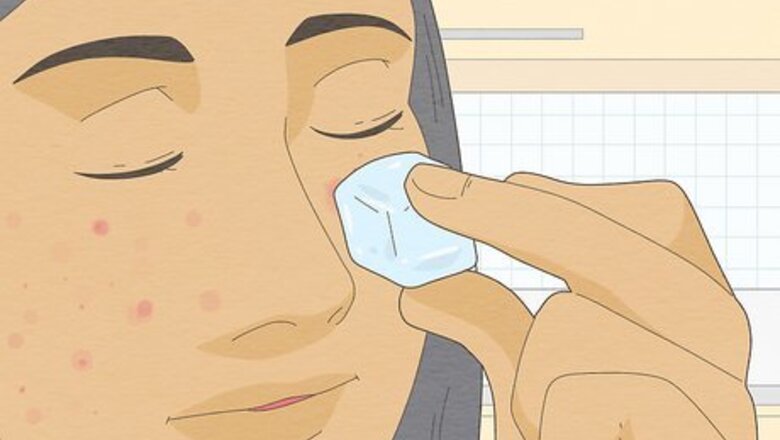
views
Reducing Pimple Redness Overnight
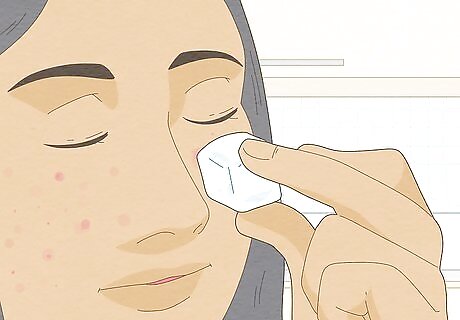
Apply ice to reduce swelling and redness. Ice can help reduce inflammation, which might help shrink your pimple. Wrap an ice cube in a paper towel and hold it up to your pimple for 5-10 minutes, pressing firmly. Take a 10-minute break, then repeat the process two more times. If you don’t have ice readily available, try using a cold towel or a bag of frozen vegetables wrapped in a clean cloth. Always apply ice with material between the ice and your skin, and never apply ice for more than 15-20 minutes.
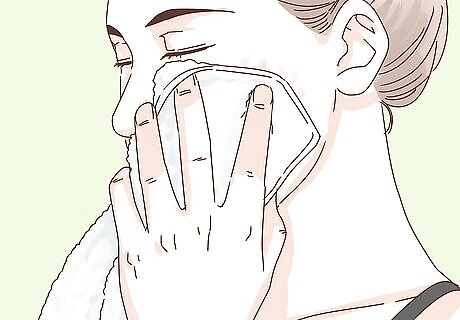
Drain the pimple by using a warm compress. You should not squeeze your pimple. Your pimple will often pop on its own when a white head forms. Removing the pus will prevent infections and can reduce inflammation. Gently press down on the sides of the pimple with your washcloth until all of the pus has been pushed out. Wash your hands before and after touching a pimple. A whitehead designates that the pus is near the surface of your skin. Squeezing a pimple can damage your skin and help spread bacteria to other parts of your face.

Rub an antibiotic ointment into the pimple. A popped pimple is an open wound, and applying an ointment or solution can help heal your skin. Apply an antibiotic ointment, like Neosporin, to the pimple to help heal and protect it. As an alternative, apply all-natural solutions like witch hazel or warm water with salt to the area if you don't have an antibiotic ointment. For minor pimple wounds, an antibiotic ointment can help it heal in a couple of days.

Don't pick your pimple. After you pop your pimple, you may want to pick at the scab that forms. You should not do this. Irritating the area will make the pimple swell, get irritated, and become redder. Picking at your skin can even lead to scarring in some cases, so it's best to leave it be. Picking at your pimple can slow down the healing process. Every time you touch your popped pimple, you are transferring bacteria and other contaminants to the open wound. It's especially important that you do not pick at pimples or whiteheads that form under the skin. Irritating or causing an injury to the deeper part of the skin, known as the dermis, can lead to irreversible scarring.
Trying Natural Remedies

Dab the pimple with honey. Covering your popped pimple with honey can be an effective way to heal the wound overnight. Use a cotton swab to spread a light layer of honey over the popped pimple and let it dry. Honey is an astringent and has antiseptic properties that promote wound healing.

Use apple cider vinegar. Apple cider vinegar is antibacterial, antimicrobial, and has antiseptic properties. Put it on your pimple to help reduce redness and inflammation and to promote healing. Dilute the vinegar so that your solution is 4 parts water to 1 part vinegar. Then, apply the vinegar directly to the skin with a cotton ball. Start with a larger ratio of water to vinegar if you have sensitive skin.
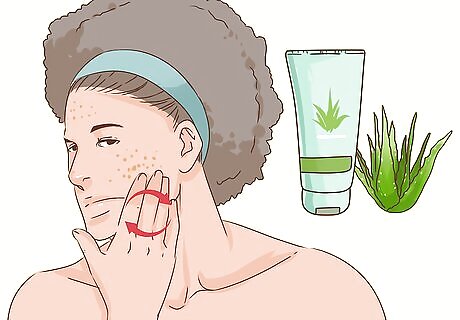
Apply aloe vera gel to the popped pimple. Aloe vera reduces inflammation and promotes healing, which will help the pimple look smaller the next day. Use a cotton swab to apply the aloe vera gel to the popped pimple. Apply the gel each night until the appearance of the popped pimple is reduced.
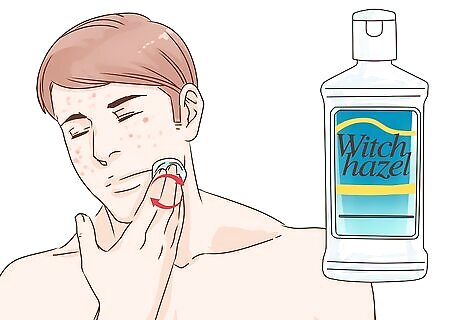
Wipe witch hazel over your popped pimple. Witch hazel is an astringent and pulls fluids away from pimples. This can help reduce inflammation and redness overnight.
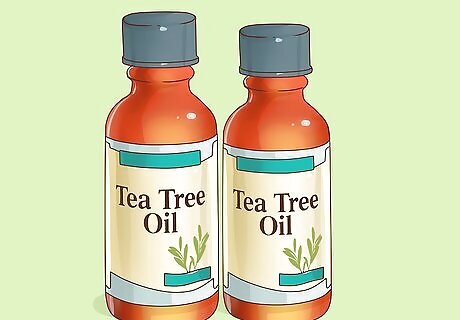
Try an antiseptic oil. Certain oils have antiseptic properties and can help your pimple heal. Use a cotton swab or a cotton ball to dab some oil on the popped pimple. Leave the oil on your skin until it dries, then reapply more. If your skin is sensitive, spot-test the oil on your skin first. Some examples of antiseptic oils include tea tree oil, oregano, spearmint, calendula, rosemary, and lavender.
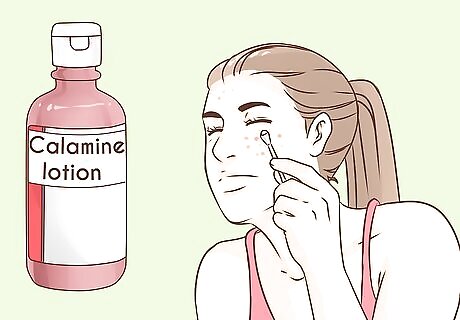
Dab calamine lotion over the popped pimple. Calamine lotion helps reduce the appearance of acne scars and will reduce redness and inflammation wherever you apply it. Use a cotton swab to apply the lotion over the pimple and let it sit overnight. When you wake up, wash the lotion off your face.
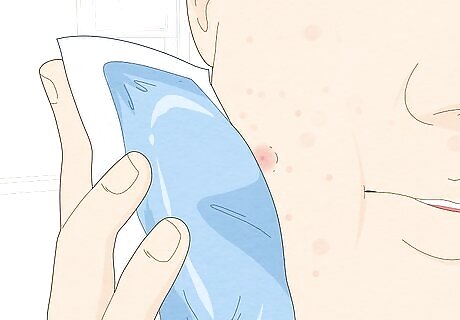
Ice the popped pimple before you go to sleep. Ice works well to temporarily reduce inflammation from a popped pimple. Use a cold compress or ice pack, and hold it to the area for 3-4 minutes. Ice the pimple a few times before bed.
Using Pimple Patches
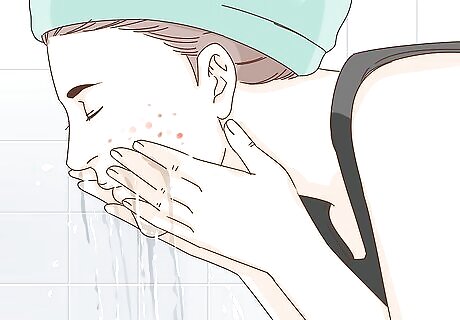
Wash your face. Wash your hands thoroughly before you touch your face. Gently clean your face with a mild soap or facial cleanser and warm water. Use light circular motions as you wash your face. Rinse your face off with warm water and pat it down with a clean cotton towel when you're done.

Cut a hydrocolloid dressing to fit over the popped pimple. You can find these in most drug stores, pharmacies, or department stores. Cut a large enough piece of hydrocolloid dressing so that it can fit over the area of skin where your pimple is. Once it's the right size, remove the paper backing to uncover the adhesive. If the dressing is already an appropriate size for your pimple, skip this step. If your dressing does not have adhesive, secure the edges of the dressing with medical tape.
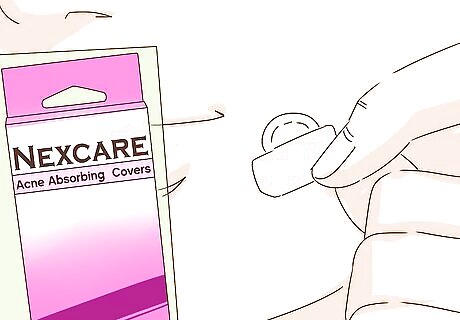
Cover the pimple with the hydrocolloid dressing. Press the sticky side of the dressing onto the pimple. Flatten out the dressing onto your face, making sure to smooth over any wrinkles or creases in it. Hydrocolloid dressings absorb fluids in a wound and reduce swelling. Examples of hydrocolloid dressings include Nexcare Acne Absorbing Covers, Johnson & Johnson Tough Pads, or DuoDERM Dressing.
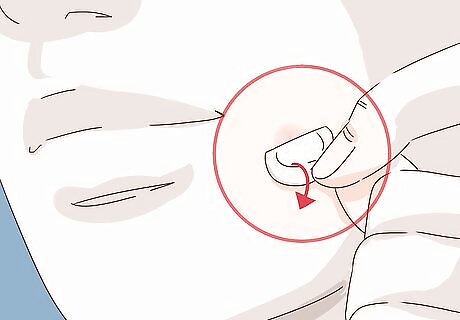
Replace the hydrocolloid dressing. Leave the hydrocolloid dressing on your face overnight. Replace the dressing in the morning when you wake up. You should see a reduction in both pus and inflammation around the area. If your skin gets irritated or a rash forms, stop using hydrocolloid dressings. Gently pick up one corner of the dressing and peel it away to remove it.



















Comments
0 comment